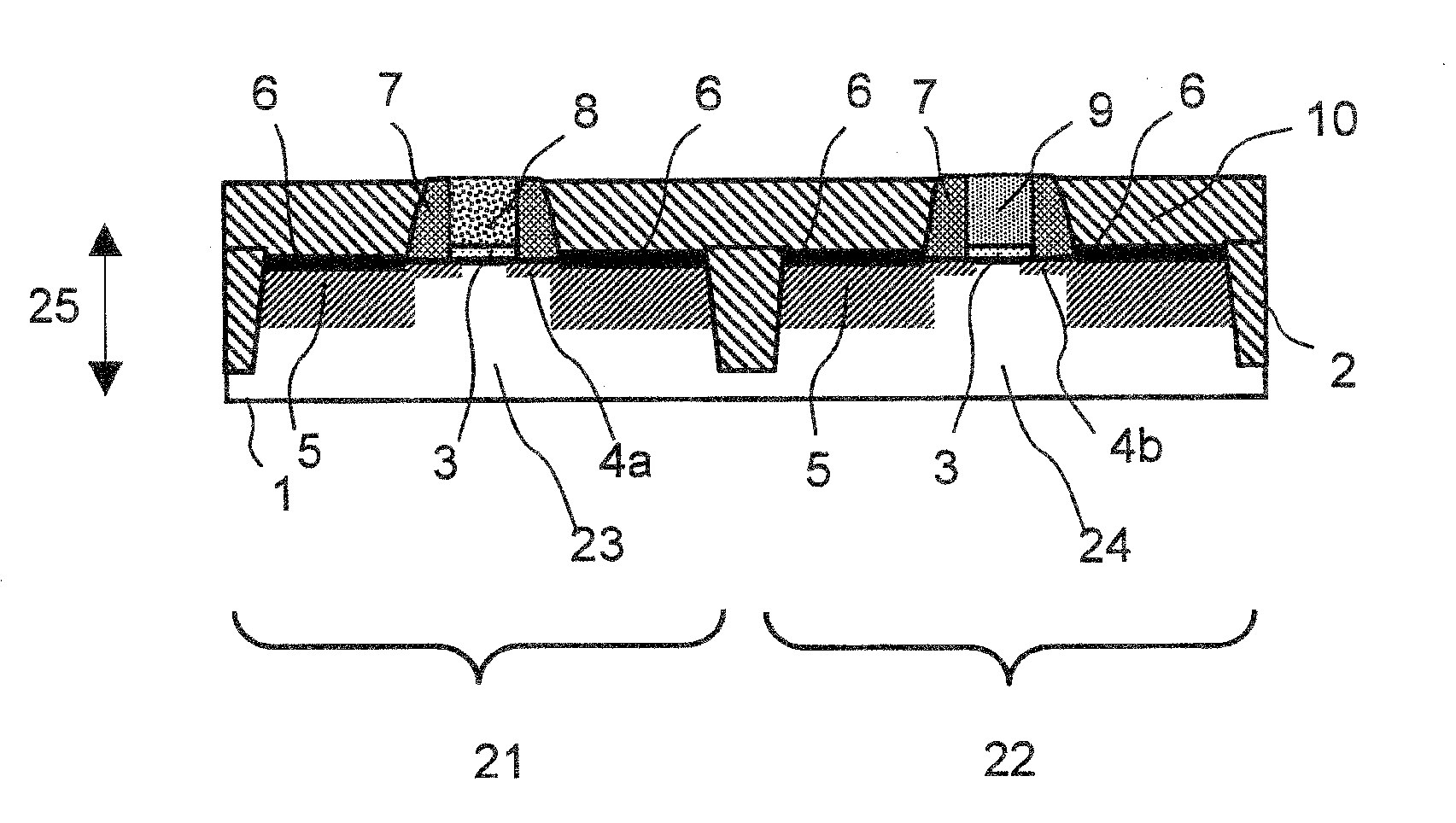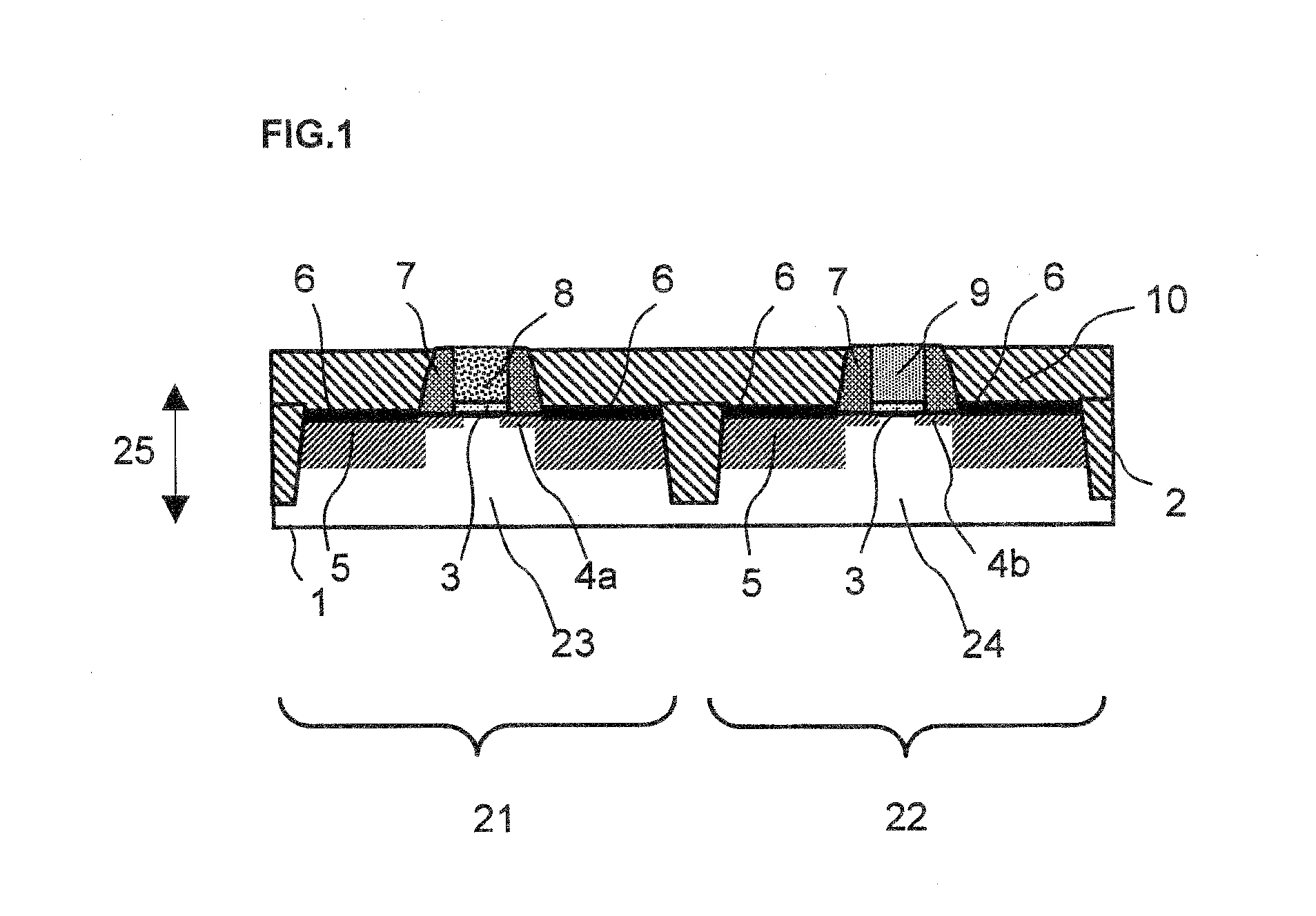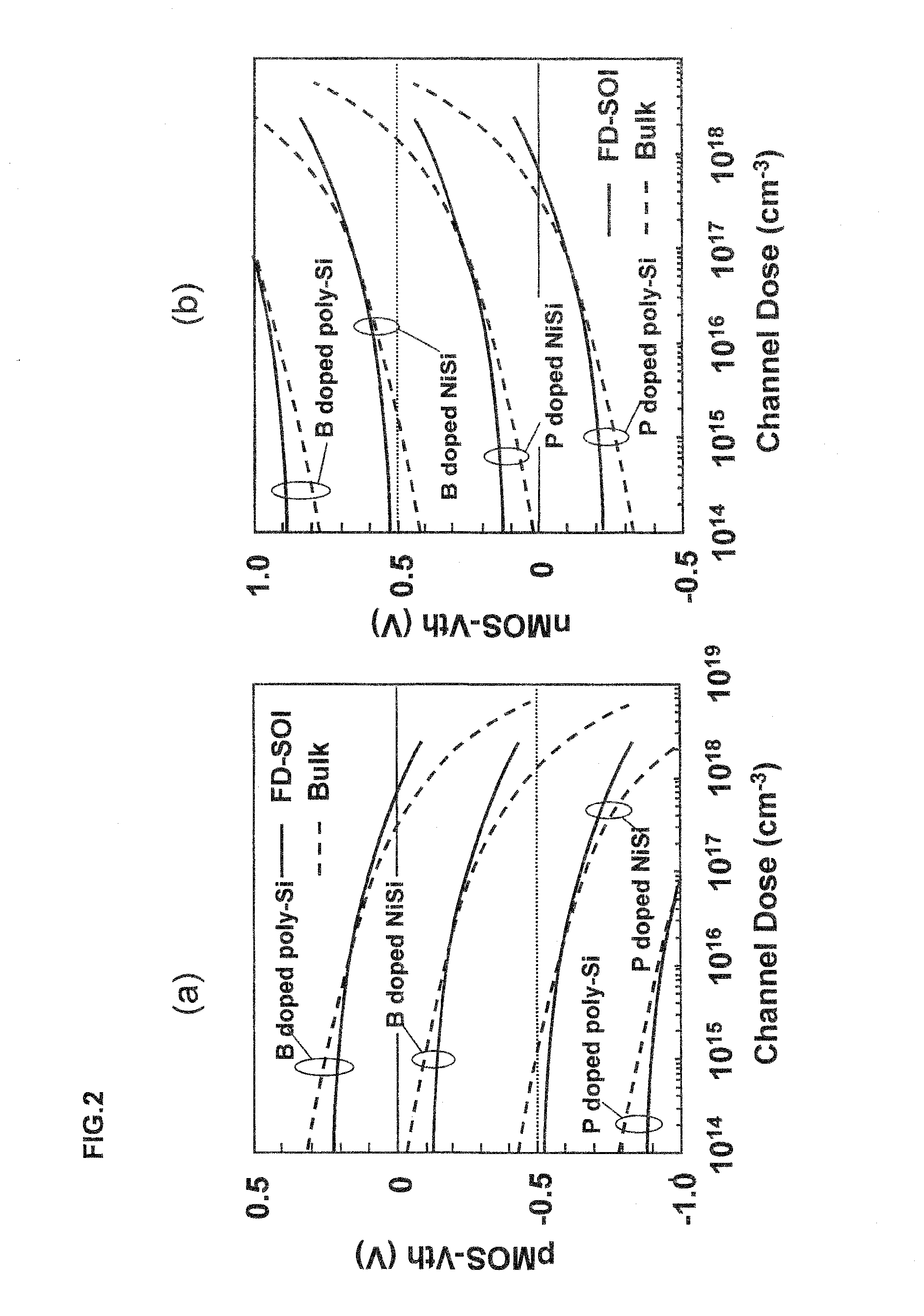Semiconductor device and method for manufacturing the same
a technology of semiconductors and semiconductors, applied in the direction of semiconductor devices, electrical devices, transistors, etc., can solve the problems of difficult control of vsub>th/sub>values to fall within the above range, and achieve the effects of suppressing short-channel effect, low power consumption, and high speed
- Summary
- Abstract
- Description
- Claims
- Application Information
AI Technical Summary
Benefits of technology
Problems solved by technology
Method used
Image
Examples
first exemplary embodiment
[0208]FIGS. 6 to 9 show an example of a method for manufacturing a semiconductor device of the present invention. FIGS. 6 to 9 show a method for manufacturing a semiconductor device in which each of an nMOS transistor and a pMOS transistor form a planar transistor.
[0209]First, an SOI substrate including support substrate 1, embedded oxide film 11, and a silicon layer with n-type region 24 and p-type region 23 is prepared. The thickness of the silicon layer in the SOI substrate is adjusted in such a way that manufactured MOS transistors are fully depleted. The SOI substrate can be formed by using bonding or SIMOX. For example, a smart-cut method or an ELTRAN method may be used.
[0210]STI (Shallow Trench Isolation) technique is then used to form isolation region 2 in the silicon layer so that n-type region 24 and p-type region 23 are isolated.
[0211]Thermal oxidation is subsequently used to form insulating film 3 comprising a silicon oxynitride film on the surface of the silicon layer. ...
second exemplary embodiment
[0224]FIGS. 13 to 20 explain another example of the method for manufacturing a semiconductor device of the present invention. The manufacturing method relates to a method for manufacturing a semiconductor device including a fin-type MOSFET. First, a substrate with silicon substrate 1, embedded oxide film 11, and silicon semiconductor layer 55 with n-type and p-type regions sequentially stacked is prepared: (FIG. 13(a)).
[0225]Mask pattern 56 is then formed on silicon semiconductor layer 55 (FIG. 13(b)). A silicon oxide film or a silicon nitride film can be used as mask pattern 56, a silicon nitride film is preferably used. Mask pattern 56 is then used as a mask to etch the resulting structure so as to form protruding p-type region 23 and n-type region 24 protruding from embedded oxide film 11 (FIG. 14(a)).
[0226]Thermal oxidation is carried out on p-type region 23 and n-type region 24 to form second gate insulating film 3a and first gate insulating film 3b (SiO2 film) on both sides of...
PUM
 Login to View More
Login to View More Abstract
Description
Claims
Application Information
 Login to View More
Login to View More - R&D
- Intellectual Property
- Life Sciences
- Materials
- Tech Scout
- Unparalleled Data Quality
- Higher Quality Content
- 60% Fewer Hallucinations
Browse by: Latest US Patents, China's latest patents, Technical Efficacy Thesaurus, Application Domain, Technology Topic, Popular Technical Reports.
© 2025 PatSnap. All rights reserved.Legal|Privacy policy|Modern Slavery Act Transparency Statement|Sitemap|About US| Contact US: help@patsnap.com



